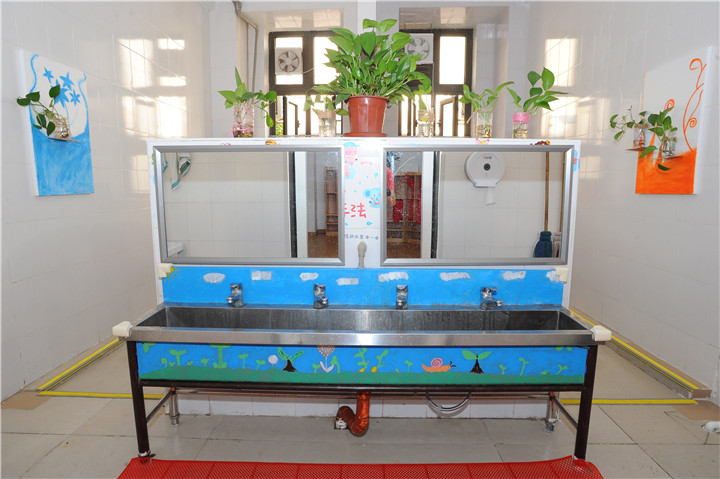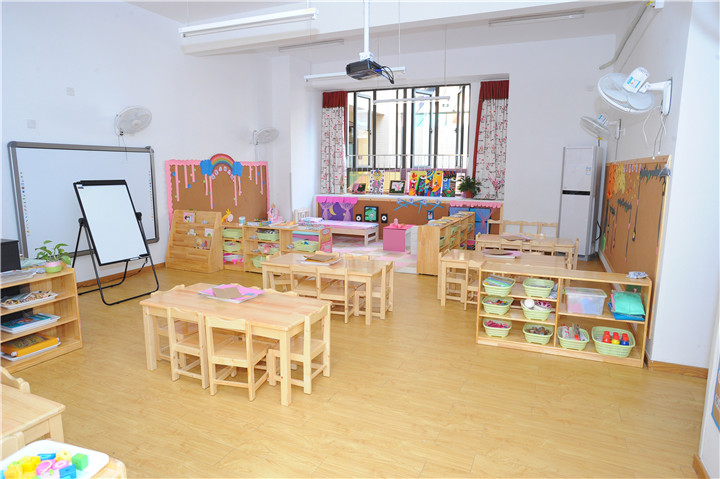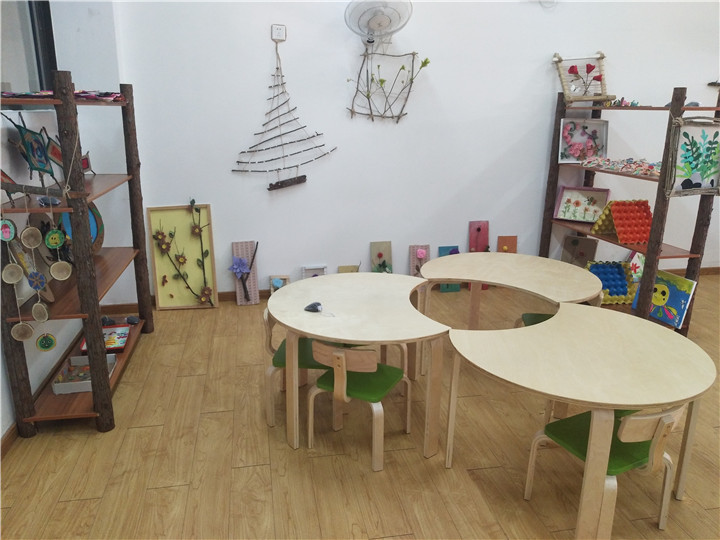广州市番禺区天誉加拿达幼儿园
手足口病是一种常见传染病,可自愈,传染性强,传播途径多,5岁以下儿童多见。大多数患者症状轻微,以发热和手、足、口腔等部位的皮疹或疱疹为主要特征。少数患者可并发无菌性脑膜炎、脑炎、急性弛缓性麻痹、呼吸道感染和心肌炎等。个别重症患儿病情进展快,易发生死亡。只要发现及时,护理得当,一般不会并发什么严重的后果,不会在皮肤上留下任何色素痕迹或疤痕。
一、手足口病主要传播方法
肠道病毒71型(EV71病毒)是引起婴幼儿手足口病主要病原体之一。肠道病毒可经胃肠道(粪-口途径)传播,也可经呼吸道(飞沫、咳嗽、打喷嚏等)传播,亦可因接触患者口鼻分泌物、皮肤或粘膜疱疹液及被污染的手及物品等传播。
二、发病症状
有些症状表现明显,急性起病,发热(通常在38度左右),口腔粘膜出现散在疱疹,手、足和臀部出现斑丘疹、疱疹,疱疹周围有炎性红晕,疱内液体较少。可伴有咳嗽、流涕、食欲不振、恶心、呕吐、头痛等症状。部分病例仅表现为皮疹或疱疹性咽峡炎。全病程约5-10天,多数可自愈,预后良好,无后遗症。少数病例,特别是EV71感染患儿,可出现脑膜炎、脑炎、脑脊髓炎、神经源性肺水肿、循环障碍等,病情凶险,可致死亡或留有后遗症。
三、家庭防治措施
1、在手足口病流行期间,无患病儿童的家庭,应注意家庭成员个人卫生和环境卫生。个人卫生应注意勤洗手、洗澡,勤换洗衣物,勤晾晒被褥。每天开窗通风2~3次,每次不少于30分钟。家庭地面和桌、椅、床、柜、门把手等各种物体表面应做好卫生清洁。餐具消毒20分钟后使用。儿童玩具定期清洗。搞好厨房和洗手间卫生,家庭成员回家后应及时洗手、更衣,有客来访后,应对相关物品进行清洁处理,必要时进行消毒。
2、患儿居家治疗的,不可在传染期前往托幼机构或学校,也不可与其他儿童接触。患病期间应做好消毒工作,消毒的对象包括:地面、墙壁、桌椅等家具台面、门把手、患儿餐饮具、衣服、被褥、玩具等生活和学习用品。洗手间应勤打扫,垃圾应及时清理。
3、尽量少带孩子去拥挤的公共场所。
4、家长平时要多注意观察孩子身体状况的变化,一旦发现孩子有发热、出疹、口腔溃疡等表现,应尽早带孩子到医院就诊,并积极配合医生的治疗。轻症患儿不需住院,但应注意休息,避免交叉感染。
四、防治手足口病常用消毒方法
1、地板、厕所、墙:用含有效氯1000毫克/升消毒剂擦、拖、喷雾消毒15分钟。
2、患儿的衣服、被褥需要单独清洗,用70℃以上热水浸泡30分钟,患儿所用毛巾、擦手巾等每次清洗后煮沸5分钟。
3、患儿的食饮具每天煮沸消毒20分钟或用二星级消毒碗柜消毒,也可用含有效氯250mg/L的消毒液浸泡30分钟后再用清水冲洗干净。
4、对门把手、楼梯扶手、床围栏、桌椅台面、水龙头等物体表面用含有效氯500mg/L消毒液擦拭或喷洒消毒15分钟,必要时用清水擦拭干净以免腐蚀损坏。
5、患儿接触过的玩具、学习用品用含有效氯500mg/L的消毒液擦拭或浸泡, 15分钟后用清水擦拭、冲洗干净。







Hand, Foot & Mouth Disease Prevention and Control
Canadian Kindergarten-Tianyu(CKE-TY)
Hand, foot and mouth disease is a common infectious disease which can be self-healing but is easily infectious, with many methods of transmission. Most HFM patients are less than 5 years old and experience mild symptoms, characterized by fever, skin rash or herpes on the hands and feet or in the mouth. A few patients may develop aseptic meningitis, encephalitis, acute flaccid paralysis, respiratory infections or myocarditis. Early detection and getting proper care generally leads to sufferers not having any serious symptoms and can avoid leaving pigmentation marks or scars on the skin.
1.Main transmission method
The enterovirus can be transmitted through the gastrointestinal tract (fecal - oral route ), or by respiratory tract (respiratory droplets, cough, sneezing, etc. ), and can also be transmitted by contact with the patient's mouth and mouth secretions, skin or mucous fluid and contaminated hands and articles.
2.Symptoms of the disease
Some symptoms are obvious. Acute onset, fever (usually around 38 degrees ), oral mucous membrane appears scattered in herpes, hand rash, herpes around the buttocks, inflammation around the herpes, less fluid in the blisters. It can be accompanied by cough, runny nose, loss of appetite, nausea, vomiting, headache and other symptoms. Some cases only show skin rashes or herpetic angina. The standard duration of infection is about 5 - 10 days, with most cases self–healing. The prognosis is generally good, but in certain cases, especially with EV71 infection, there can appear meningitis, encephalitis, encephalomyelitis, neurogenic pulmonary edema, circulatory disorders and other symptoms which can cause long-term, chronic side-effects or in very rare cases even death.
3.Family control measures
3.1) During an outbreak of hand, foot and mouth disease, the family of children with no symptoms should pay attention to the personal hygiene and environmental hygiene of all family members. Attention should be paid to washing of hands and clothes and to the drying of bedding. Opening a window every day (2 - 3 times, not less than 30 minutes each time) is advised and floors, tables, chairs, beds, cabinets, door handle and other furniture surfaces should be cleaned and sanitized properly. Tableware should be disinfected within 20 minutes of use along with regular cleaning of children's toys and careful attention paid to hygiene in the kitchen and washroom. Family members should wash their hands and clothes promptly after arriving home, and after visiting others, clean the relevant articles and sterilize them if necessary.
3.2) Children undergoing treatment at home should not go to kindergartens or schools during the transmission period, nor may they contact other children. During the course of the disease, disinfection should be done thoroughly as described above.
3.3) Try not to bring children to crowded public places as much as possible during high-infection times.
3.4) Parents should pay attention to observe changes in the physical condition of children. Once the children show signs of fever, rash, oral ulcers etc. parents should take children to a hospital as soon as possible, and cooperate fully with doctors’ advice. Children with light infection need not be hospitalized but should pay attention to rest and avoiding cross infection.
4.Common disinfection methods for the prevention and treatment
4.1) Floor, toilet and wall: wipe, drag and spray for 15 minutes with available chlorine 1000 Mg / L disinfectant.
4.2) The clothes and bedding of children need to be washed separately, soak for 30 minutes with hot water above 70 ℃. Items like towels should boil for 5 minutes after each cleaning.
4.3) Children's drinking water should be boiled and sterilized for 20 minutes every day or sterilized by two star disinfection cupboards. A disinfectant with available chlorine 250 Mg/L should be used for 30 minutes of soaking and then rinsed with water.
4.4) Wipe or disinfect the surface of objects such as door handles, handrails, bed frames, tables chairs, faucets, etc. with available chlorine 500 Mg / L disinfectant solution for 15 min, and wipe with clean water if necessary to avoid corrosion damage.
4.5) Toys and learning articles that have been exposed to children should be wiped or soaked with disinfectant containing available chlorine 500 Mg / L for 15 minutes and cleaned with water after 15 minutes.

|


